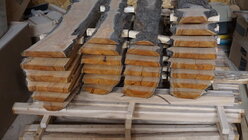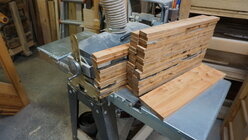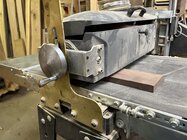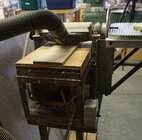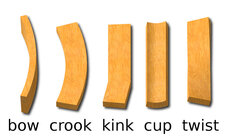I've been woodworking since 2020, although since the latter part of 2021 through late 2023, I hardly did much (mostly just pens.) I got back into my other turning this year...including bowls, platters, vases, ornaments and decorative items, and turned boxes. Boxes, and maybe other kinds of wood working, is something I'm more interested in. Not just turned, but more classic types of boxes. As pens are also a staple type of turning, I've been wanting to start making smaller boxes for pens...or maybe sets of two pens, or a pen and a letter opener.
I looked into some articles and videos on box making, and I understand the basics. But most of it was for boxes larger than I would need for pens, or even some of the other small boxes I'd be interested in (to start, anyway)...such as jewelry boxes. Most of the boxes I'm interested in, I figure the wood thickness would be 1/4" or even thinner. For a decent pen box, maybe 1/8" is more likely.
I don't have a thickness planer, and ATM cannot afford one. So I've been looking at buying and restoring vintage hand planers. You can often find them for around $10-20 on ebay, often with free shipping, so its a real steal if they can be cleaned up, fixed up, and sharpened and honed properly. The thing that has caught me, here, as I'm trying to learn what planers I'd need, is how to actually plane smaller boards. I would say, the first few pen boxes I'm thinking of making, are probably going to be about 6" or so long, and an inch or so wide. Maybe with a hinged lid, maybe with magnetic lids. So, pretty small boards...1/8" thick? I suddenly realize I have no clue where to start when it comes to planing such small boards so they have not only even thickness along their length and wide surfaces...but also have the same heights and lengths. I know you can do edge joint planing to make two edges compatible with each other. However, I'm failing to see how that would work, if the planer, even say a #9 smoothing planer, is likely going to be much, much larger than the boards?
Are there smaller types of planes that would get the job done better? Are there certain kinds of jigs I could put together to make planing, jointing, etc. such small pieces of wood easier? Any other insights or resource links are welcome as well.
I looked into some articles and videos on box making, and I understand the basics. But most of it was for boxes larger than I would need for pens, or even some of the other small boxes I'd be interested in (to start, anyway)...such as jewelry boxes. Most of the boxes I'm interested in, I figure the wood thickness would be 1/4" or even thinner. For a decent pen box, maybe 1/8" is more likely.
I don't have a thickness planer, and ATM cannot afford one. So I've been looking at buying and restoring vintage hand planers. You can often find them for around $10-20 on ebay, often with free shipping, so its a real steal if they can be cleaned up, fixed up, and sharpened and honed properly. The thing that has caught me, here, as I'm trying to learn what planers I'd need, is how to actually plane smaller boards. I would say, the first few pen boxes I'm thinking of making, are probably going to be about 6" or so long, and an inch or so wide. Maybe with a hinged lid, maybe with magnetic lids. So, pretty small boards...1/8" thick? I suddenly realize I have no clue where to start when it comes to planing such small boards so they have not only even thickness along their length and wide surfaces...but also have the same heights and lengths. I know you can do edge joint planing to make two edges compatible with each other. However, I'm failing to see how that would work, if the planer, even say a #9 smoothing planer, is likely going to be much, much larger than the boards?
Are there smaller types of planes that would get the job done better? Are there certain kinds of jigs I could put together to make planing, jointing, etc. such small pieces of wood easier? Any other insights or resource links are welcome as well.

